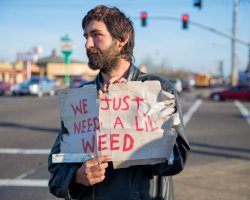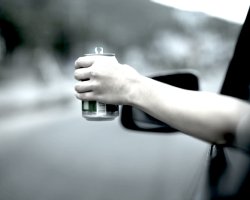Safeguarding Our Future—Marijuana and Alcohol Use among Youth

The health and well-being of our young people is something to safeguard. Our youth of today are our leaders of tomorrow. An investment in their future is really an investment in ours, too.
As parents, we want our kids to grow up to lead successful, happy, and healthy lives. For those of us who are not parents, we still want to see young people enter adulthood fully capable of creating a better life for themselves and those around them.
But all of that is quite difficult to make a reality when a certain percentage of our country’s youth are using drugs and alcohol. Substance abuse impairs both one’s present and one’s future, causing physical and mental problems in the here and now and later.
The “Monitoring the Future Survey” is a program, funded by the National Institute on Drug Abuse, that seeks to understand trends and characteristics of youth substance abuse. The more we know about the problem, the better we can combat it.
So what exactly are the trends of drug use at this time? Are young people using drugs more or less than they used to? Is there a difference in drug-use trends between young people in college and young people not in college? What is the biggest concern right now with youth drug use?
Exploring the Findings of the 2017 Monitoring the Future Survey, NIDA, and the CDC
Every year, NIDA funds nationwide surveys of youth. The most recent publication is the 2017 Monitoring the Future Survey. What is interesting about the 2017 survey is that it sought to determine the difference in drug-use trends between college students and non-college students of the same age range. The results were startling, particularly when we supplement the survey data with additional data from NIDA and the Centers for Disease Control and Prevention.
- According to the survey, about 13 percent of young adults not in college report daily or near-daily marijuana use. This rate is almost three times the rate of daily or near-daily marijuana use among college students.
- Conversely, alcohol use is more common among college students than it is among their non-college peers. According to the survey, about 62 percent of college students drink alcohol, compared to about 56 percent of their non-college peers.
- Synthetic drug use is more common among non-college students than it is among college students. For example, non-college students use synthetic cannabinoids at a rate of 2.4 percent, compared to only 0.5 percent for college students. Similar results can be seen with synthetic cathinones (a type of amphetamine) — about 1.5 percent for non-college students, 0.2 percent for college students.
- Perhaps most concerning of all is the degree of prescription drug abuse among our youth—a problem which affects both those in college and those not attending college. According to a direct, NIDA quote on the subject: “Young adults are the biggest abusers of prescription opioid pain relievers, ADHD stimulants, and anti-anxiety drugs. In 2014, more than 1,700 young adults died from prescription drug (mainly opioid) overdoses—more than died from overdoses of any other drug, including heroin and cocaine combined—and many more needed emergency treatment.”
- And it’s not just the young adult deaths from prescription drug abuse we should be concerned about. For every young person who dies from a prescription drug overdose, 22 young people check into a treatment center for prescription drug addiction, and 119 young people must go to the emergency room for prescription drug abuse.
- The Centers for Disease Control and Prevention also published some information that is relevant here. The CDC has a graph on the leading causes of death for all age ranges. For individuals between the ages of 15 and 24, the three leading causes are (1) unintentional injury, (2) homicide, and (3) suicide. Unintentional injury often appears in the form of a drug overdose, alcohol poisoning, a drugged or drunk-driving accident, etc. Homicide is sometimes connected to drugs or drug use. And suicide is almost always committed in the presence (and under the influence) of drugs and alcohol. So we begin to see just how dangerous substance abuse is for our youth.
How Can Parents, Educators, and Opinion Leaders Encourage Our Youth to Lead Sober Lives?

Substance abuse is a problem for our youth. Some research indicates specific drug-use trends are reducing among young people (see the NIDA article about the Monitoring the Future Survey cited earlier). And that’s something to be grateful for.
However, there are drug-use trends among youth that are still quite common and which are quite dangerous—even lethal. So we need to do something about it?
There are two, primary methods for reducing a drug problem across any demographic or age group. These are:
- Prevention. The most efficient way to reduce a drug problem is to prevent it from even happening in the first place. That is done by educating youths on the risks and dangers of drug use, giving them the truth about drugs, teaching them how to contend with peer pressure, etc.
- Rehabilitation. For those who have already fallen prey to a drug habit, the best course of action is for them to go through programs at residential drug and alcohol addiction treatment centers. A residential drug rehab program offers the safest and most effective approach for breaking free from the shackles of addiction.
If you know a young adult who is struggling with a drug or alcohol problem, now is the time to act. This is not something to be lackadaisical about. People die every day in the United States from drug overdoses and drug-related accidents or injuries. If we are going to create a better future for all of us, we must safeguard our youth and ensure that they lead sober, drug-free lives.
Sources:
- https://www.drugabuse.gov/news-events/news-releases/2018/09/daily-use-marijuana-among-non-college-young-adults-all-time-high
- https://www.drugabuse.gov/related-topics/trends-statistics/infographics/abuse-prescription-rx-drugs-affects-young-adults-most
- https://www.cdc.gov/injury/wisqars/pdf/10lcid_all_deaths_by_age_group_2010-a.pdf


 ®
®